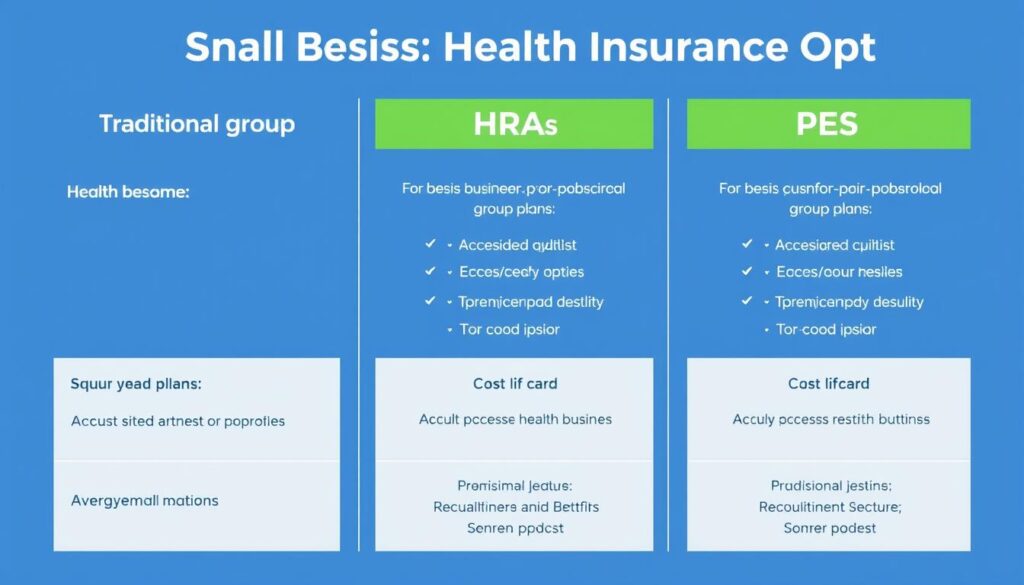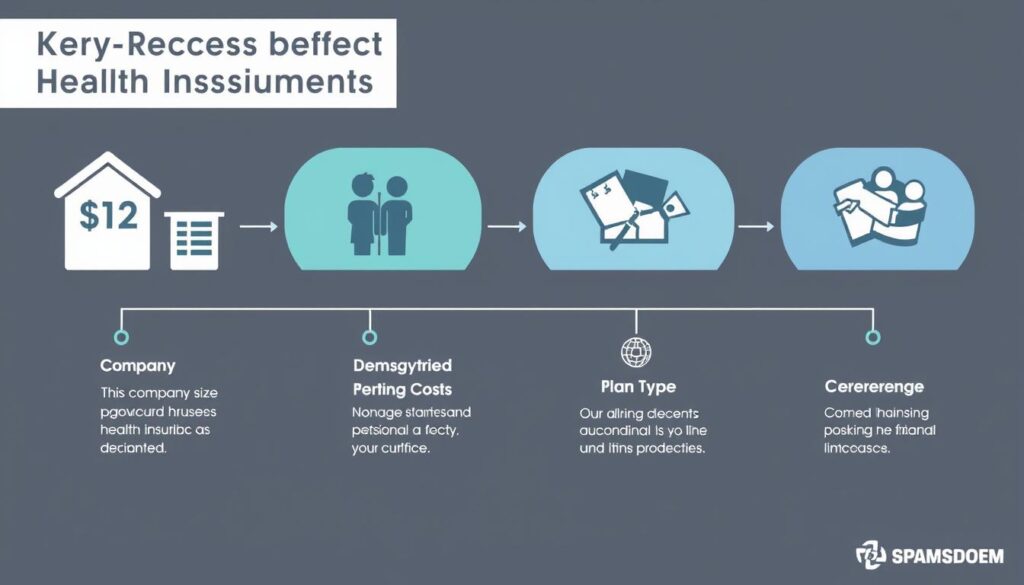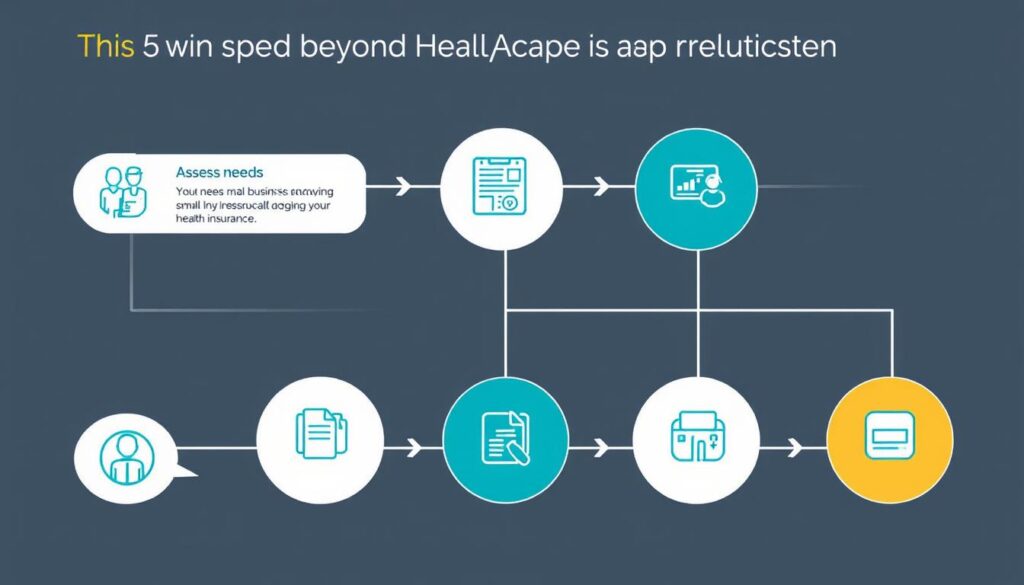Read on and you’ll get a clear checklist: the legal basics, the plan types that match different budgets, smart ways to control costs, and quick tips to help your employees get the care they need. Short, practical, and written like a friend who’s spent too long on hold with insurers—let’s do this.
Why Small Businesses Need Health Insurance: Beyond the Mandate
- Why Small Businesses Need Health Insurance: Beyond the Mandate
- Understanding Legal Requirements for Business Health Insurance
- Exploring Your Small Business Health Insurance Options
- How Much Does Business Health Insurance Cost?
- Smart Strategies to Reduce Your Business Health Insurance Costs
- How to Get Business Health Insurance: A Step-by-Step Approach
- Frequently Asked Questions About Business Health Insurance
- Taking the Next Step with Business Health Insurance
Offering health insurance isn’t just ticking a legal box—it’s a smart business move that pays off in hiring, morale, and productivity. Think of it as a bit of “hiring insurance”: you invest a little now to avoid the big headache (and cost) of constant turnover later.
The Competitive Advantage of Employee Health Benefits
In today’s market, good health care benefits often separate “meh” offers from “I’ll take it.” Many employers rank health benefits as a top priority for their workforce, and candidates notice. Offering quality health benefits makes your business more attractive and helps you keep the people who actually know how your company runs.
Quick wins you’ll likely see:
- Better hiring outcomes — candidates pick you over competitors.
- Higher retention — employees stay longer, saving on recruiting and training costs.
- Improved productivity — fewer sick days and more focus on work.
The Real Cost of Not Offering Health Insurance
Skipping health coverage might save money on paper, but it can cost you in the long run. Employee turnover — recruiting, onboarding, lost know-how — can be very expensive. While exact numbers vary by industry, turnover often runs into a hefty percentage of an employee’s salary once you factor in recruitment and training.
“Health insurance isn’t just an expense—it’s an investment in your business’s most valuable asset: your people.”
Beyond dollars and cents, offering benefits signals that you care about employee wellbeing. That improves company culture, builds loyalty, and even boosts the perceived quality of your employer brand — all helpful when you’re competing for talent.
Ready to see how benefits fit your budget? Keep reading — the next section walks through the main plan types and which businesses they suit best.
Understanding Legal Requirements for Business Health Insurance
Before you shop for plans, it’s smart to know what the law expects. Your legal obligations around health coverage mostly depend on how many employees you have and how you classify their hours.
The Affordable Care Act (ACA) and the Employer Mandate
The ACA draws a bright line based on company size:
Small Businesses (Under 50 FTEs)
If your business has fewer than 50 full-time equivalent employees, you are not legally required to offer group health insurance under the ACA. That said, many small businesses still offer coverage because of the hiring and retention advantages — and because some tax incentives may apply.
Applicable Large Employers (50+ FTEs)
Businesses with 50 or more full-time equivalent employees are considered Applicable Large Employers (ALEs). ALEs generally must offer affordable coverage that provides minimum essential coverage to their full-time staff (there are rules about how many employees must be offered coverage), or they could face potential penalties.
How to Calculate Full-Time Equivalent (FTE) Employees
Figuring out your FTEs is the practical step that determines whether you fall on the small-business or ALE side of the line.
FTE Calculation Formula:
(Total hours worked by part-time employees each week ÷ 30) + Number of full-time employees = Your FTE number
Full-time employees are those who work 30 or more hours per week under the ACA definition. Quick example: if you have 3 full-time employees and part-timers who together work 60 hours per week, your FTE = (60 ÷ 30) + 3 = 5.
- Owners, partners, and certain family members may be counted differently depending on insurer or state rules — check with a licensed agent or CPA.
- Seasonal workers and temporary hires have special counting rules too.
Key Compliance Considerations
Even if you choose to offer coverage voluntarily, any plan you provide should follow important rules:
- ACA standards for essential health benefits and what “minimum” coverage looks like
- HIPAA and privacy rules for protecting employee health information
- State-specific insurance regulations — these vary, so check your state department of insurance
- Non-discrimination requirements to ensure benefits are offered fairly
If your FTE count is near 50, or if you’re unsure how owners and partners factor in, talk to a licensed agent or benefits attorney. They can help you avoid surprises and make sure your group health or alternative plan meets the rules — and your company’s needs.
Exploring Your Small Business Health Insurance Options
Small businesses have more than one way to give employees access to health coverage. Which path is best depends on your company size, budget, and what your employees actually need — so let’s keep this simple and practical.

Traditional Group Health Insurance Plans
Best for: businesses that want a single group health insurance plan and predictable administration.
Group health insurance is the classic approach: you buy a plan from an insurance company that covers eligible employees (and often dependents). Employers usually share premiums with employees and pick from common plan types.
Types of Group Plans:
- HMO (Health Maintenance Organization): Lower costs and strong network controls — good if employees are happy with in-network providers.
- PPO (Preferred Provider Organization): More provider flexibility and out-of-network options — pricier, but often valued by employees.
- EPO (Exclusive Provider Organization): A middle-ground with lower premiums but limited network choice.
- HDHP (High-Deductible Health Plan): Lower premiums + HSA compatibility — works if your team can handle higher deductibles.
Why choose a group plan
- Familiar structure for employees
- Predictable monthly costs
- Potential access to larger provider networks
- Tax-advantaged treatment of employer contributions
Watch-outs
- Higher premiums than some alternatives
- Participation requirements (many insurers expect ~70–75%)
- Administrative burden for enrollment and compliance
The SHOP Marketplace
Best for: small employers who want an exchange-like shopping experience and possible tax credits.
The Small Business Health Options Program (SHOP) lets businesses with 1–50 employees compare group health insurance plans in one place. If you qualify, the Small Business Health Care Tax Credit may help offset premiums (rules apply).
Quick note: SHOP can be a good fit if you want an easy comparison between insurance company products and need tools for employee enrollment.
Health Reimbursement Arrangements (HRAs)
Best for: employers who prefer budget control and want employees to choose their own health plans.
HRAs let you reimburse employees tax-free for individual health plan premiums and/or medical expenses instead of buying one group plan.
Key HRA Types:
- ICHRA (Individual Coverage HRA): Available to employers of any size; you set the reimbursement amounts and employees buy individual plans.
- QSEHRA (Qualified Small Employer HRA): For businesses with fewer than 50 FTEs; annual contribution limits apply.
Advantages
- Defined employer budget and predictable cost
- Employees pick plans that match their needs
- Lower admin complexity compared with some group plans
Disadvantages
- Employees must find and enroll in individual plans
- QSEHRA contribution limits may not suit larger needs
- Could affect employee eligibility for marketplace subsidies
Self-Funded and Level-Funded Plans
Best for: growing businesses with relatively healthy employees that want more control over plan spend.
Self-Funded Plans:
You pay claims directly from a fund instead of fixed premiums to an insurer. Employers usually buy stop-loss insurance to limit catastrophic exposure.
Level-Funded Plans:
A hybrid option: you make fixed monthly payments (admin + stop-loss + estimated claims). If actual claims are lower, you may get a refund at year-end — so there’s upside if your group’s health is good.

Professional Employer Organizations (PEOs)
Best for: small companies that want to outsource HR, payroll, and benefits administration while accessing larger-group buying power.
By joining a PEO, your company becomes part of a larger employee pool — that can translate to better health insurance rates and broader plan options. Results vary by provider, so compare PEO offerings and read the fine print.
“PEOs may help small businesses access better insurance rates and simpler HR administration — they’re worth a look if you want to offload benefits management.”
If you’re unsure which approach fits your business, talk to a licensed agent or benefits broker. They can run quotes across insurance company products, explain the network differences, and recommend the plan type that balances cost, coverage, and employee needs.
How Much Does Business Health Insurance Cost?
Short answer: it depends. Costs vary by plan, company size, location, and the health needs of your team. The good news is there are levers you can pull to control expenses — we’ll get to those next.
Average Premium Costs
Recent industry data puts the average annual premium for employer-sponsored health insurance at roughly $8,435 for single coverage and $23,968 for family coverage (this can change year to year—check current sources for the latest numbers).
| Coverage Type | Average Annual Premium | Average Monthly Premium | Typical Employer Contribution |
| Single Coverage | $8,435 | $703 | 70-80% |
| Family Coverage | $23,968 | $1,997 | 70-75% |
| Employee + Spouse | $17,562 | $1,464 | 70-75% |
| Employee + Child(ren) | $15,412 | $1,284 | 70-75% |
Quick mobile-friendly summary:
- Typical single coverage employer cost: majority of $703/month (employer often pays ~70–80%).
- Typical family coverage employer cost: sizable portion of ~$1,997/month (employer often pays ~70–75%).
- These are averages across many insurance company products—your actual premium and employer share will vary.
Factors Influencing Your Premiums
Several things determine what you’ll pay for business health insurance:

Business Factors
- Company size and location — urban vs. rural and state-by-state pricing
- Industry and risk profile — higher-risk industries often face higher costs
- Employee demographics — age and family status matter
- Participation rate — higher enrollment can lower per-person costs
Plan Factors
- Plan type (HMO, PPO, HDHP) — affects premiums and network access
- Coverage level and benefits (dental, behavioral health, etc.)
- Deductibles, copays, and out-of-pocket maximums
- Network size and hospital/provider quality
Contribution Factors
- Employer contribution percentage — the higher you pay, the more competitive the plan
- Dependent coverage options and spousal surcharges
- Wellness programs and incentives that reduce claims over time
- Cost-sharing structure between employer and employees
Don’t panic if those averages look high — there are cost-control solutions (like plan design, HRAs, telemedicine, and wellness programs) that can improve affordability without sacrificing quality. Next section covers smart moves to lower costs and protect your employees’ access to care.
Smart Strategies to Reduce Your Business Health Insurance Costs
Health insurance is a big line item, but there are practical moves you can make to lower costs without shortchanging employee care. Below are friendly, actionable strategies — think “do this / avoid that” — so you can pick the levers that fit your business.

Do this: Use tax advantages and credits
- Claim deductions: Employer contributions to premiums are generally tax-deductible — that’s immediate relief on your business taxes.
- Check the Small Business Health Care Tax Credit: If you have fewer than 25 FTEs and meet wage and contribution rules, you may qualify for a meaningful credit — worth investigating with your CPA.
- Pair HDHPs with HSAs: High-deductible health plans plus Health Savings Accounts (HSAs) can lower premiums and offer tax benefits for both you and employees.
Do this: Design plans with purpose (and trade-offs)
Plan design is where you can get creative — but watch the trade-offs (higher deductibles = lower premiums, more out-of-pocket for employees).
Options to consider
- Raise deductibles to reduce monthly premiums (pair with HSAs if you can).
- Offer tiered networks that steer employees to cost-effective providers.
- Switch to HRAs if you want budget certainty and employee choice.
- Explore level-funded plans if your workforce is relatively healthy.
What to avoid without advice
- Cutting benefits so deep that employees lose meaningful coverage — short-term savings can cost more later.
- Choosing narrow networks without checking provider quality and access for employees.
Do this: Run programs that lower claims over time
- Wellness programs: Simple programs (gym discounts, smoking cessation, on-site flu shots, mental health access) can improve employees’ health and reduce claims. Start small and measure engagement.
- Telemedicine: Encourage virtual care to reduce urgent care and ER visits — often cheaper and faster for routine issues.
- Prescription management: Review drug formularies and consider mail-order or generic-first policies to control pharmacy spend.
Do this: Work with the right professionals
“A good insurance broker doesn’t cost you money—they often save you money by matching plans to your needs.”
Licensed agents, brokers, and benefits consultants can shop across insurance company products, explain network differences, and negotiate rates — many work on commission, so their help can be low or no direct cost to you. Before making major plan changes, talk to a licensed agent or your CPA to understand compliance and tax implications.
Quick reminder: every cost-saving move usually comes with a trade-off. Higher deductibles, narrower networks, or HRAs shift some responsibility to employees — that’s fine if your team understands the change and has the tools (HSAs, telemedicine, clear communications) to use the plan wisely.
How to Get Business Health Insurance: A Step-by-Step Approach
Ready to stop overthinking and start choosing? Here’s a practical, friendly roadmap for how to get business health insurance—short steps, real actions, and a few tips that’ll save you time (and maybe a little hair).

Step 1: Assess Your Business and Employee Needs
Start with the basics so you don’t pick a plan that’s a bad fit.
- Set a budget: how much can your company contribute each month?
- Ask employees what matters: lower premiums, broader network access, or lower out-of-pocket costs?
- Look at workforce data: ages, family status, and common health needs — this affects plan type and costs.
- Think growth: will you hire full-time employees soon (affects FTE calculations and coverage options)?
Step 2: Research Available Options
Compare the core paths — each plan type serves different priorities.
- Traditional group health plans from insurers — common, familiar, and often wide network access.
- SHOP Marketplace plans — good for small businesses wanting an exchange-style shopping experience.
- HRAs (ICHRA / QSEHRA) — if you want budget control and let employees pick their own plans.
- Self-funded / level-funded plans — for growing companies seeking control over claims and costs.
- PEOs — outsource HR and benefits to access bigger-group rates and admin support.
Step 3: Compare Plans and Providers
Do not judge a plan by its monthly premium alone. Compare the whole package.
Key comparison points
- Premiums and employer/employee split
- Deductibles, copays, and out-of-pocket maxes
- Network size and specific provider/hospital access
- Prescription coverage and specialty drug rules
- Extra services: behavioral health, telemedicine, dental/vision, wellness programs
Providers to check
- UnitedHealthcare
- Blue Cross Blue Shield
- Cigna
- Aetna
- Kaiser Permanente (regional)
- Humana
Step 4: Apply for Coverage
Applying is mostly paperwork and coordination — here’s a quick timeline and checklist.
For group plans:
- Get quotes — contact at least 3 insurers or work with a licensed agent to compare plans.
- Fill out the employer application (business details, EIN, payroll info).
- Collect employee enrollment forms and dependent info.
- Submit documents to the insurer and wait for underwriting (often a few days to a couple of weeks).
- Once approved, choose an effective date and finalize payroll deductions.
For HRAs:
- Pick an HRA administration platform or vendor.
- Decide contribution amounts and eligibility rules.
- Create clear plan documents (what’s reimbursable and how to submit claims).
- Announce and explain the program to employees with enrollment guidance.
- Employees buy individual health plans, then submit expenses for reimbursement.
Step 5: Implement and Support Your Team
A smooth rollout makes a big difference in employee experience and the perceived value of the benefit.
- Hold a short benefits session (live or recorded) to explain coverage, networks, and how to use the plan.
- Provide one-page guides: who’s covered, how to find in-network providers, and emergency procedures.
- Set up a clear contact path for questions — broker, HR rep, or licensed agent.
- Automate premium payments and offer easy enrollment changes for life events.
- Review the plan annually: compare quotes, check employee satisfaction, and adjust the plan type if needed.
Pro tip: When you’re ready to get quotes, contact licensed agents and ask for side-by-side comparisons of plan types and networks. That’ll speed up the decision and make sure employees have access to quality care. Typical timeline from quotes → selection → effective coverage can be as quick as 30 days, but give yourself 6–8 weeks for smooth communication and admin setup.
Frequently Asked Questions About Business Health Insurance
Quick answers to the questions small business owners ask most. If you want more help, contact a licensed agent — they can walk you through options tailored to your company.

Are small businesses required to provide health insurance to employees?
Short answer: usually no. Businesses with fewer than 50 full-time equivalent employees generally aren’t required by the ACA to offer group health. If your company is 50+ FTEs (an Applicable Large Employer), you typically must offer affordable coverage or risk penalties.
Next step: if you’re near 50 FTEs, talk to a licensed agent or your CPA to confirm your status and options.
How many employees do I need to get small business health insurance?
You can often get group health with as few as one W-2 employee (rules vary). Some insurers exclude owners, spouses, or partners from the participation count, so check specific insurer or state requirements.
- Tip: Ask insurers about their minimum group rules before you start the enrollment process.
Can small businesses write off health insurance premiums?
Yes—employer contributions to employee health insurance are typically tax-deductible as a business expense. Self-employed owners may have different rules for personal premium deductions.
Action: confirm specifics with your tax advisor to maximize deductions and stay compliant.
Can I offer health insurance to just one employee?
Yes. HRAs like an ICHRA let employers of any size reimburse individual plan costs, and some insurers will underwrite very small groups. Note that traditional group health plans often have participation minimums (commonly around 70–75%), so an HRA can be a flexible alternative.
How do I get health insurance as a small business owner?
Options include:
- Joining your company’s group plan (if you have employees),
- Buying an individual plan on the marketplace,
- Joining a spouse’s employer plan if eligible,
- Using an HRA (ICHRA or QSEHRA) to reimburse individual coverage,
- Exploring PEOs or association plans for pooled buying power.
Need help deciding? Contact a licensed agent to compare quotes and the practical pros/cons for your business.
Taking the Next Step with Business Health Insurance
Offering health insurance is more than a line item — it’s an investment in your team’s wellbeing and your company’s future. When you balance cost, coverage, and access to quality care, the right health benefits package can help attract and retain talent, reduce downtime, and boost morale.
Not sure where to start? Here are three quick, practical next steps you can take today:
- Calculate your FTEs: Know whether you fall under the ACA employer rules and which plan options apply to your business.
- Set a budget: Decide how much your company will contribute monthly and what level of employee access to hospitals and providers you want to prioritize.
- Contact a licensed agent: Get at least three quotes, compare plan types and networks, and ask about group health, HRAs, or PEO solutions that fit your needs.

Ready to find the right health insurance for your business?
Compare quotes from top providers and get personalized recommendations based on your company’s needs.
Whether you choose a traditional group plan, an HRA, or another benefit solution, the key is to start. If you want a quick recap or still have questions, check the FAQ section or reach out to a licensed agent or your CPA — they can help tailor products and coverage to your business.